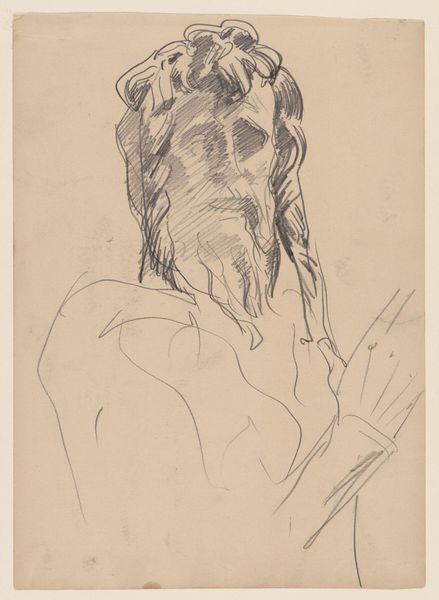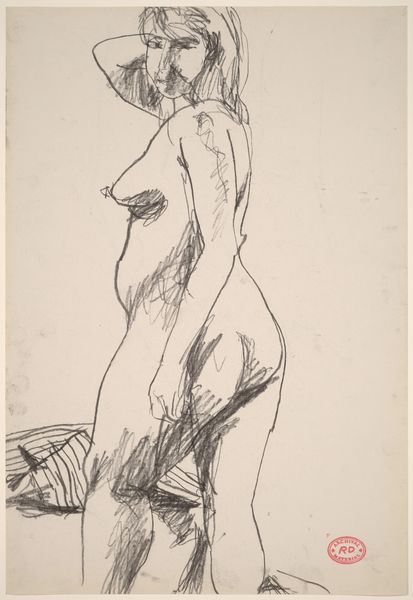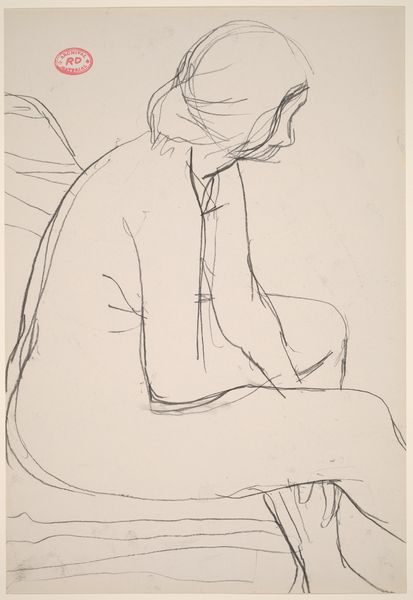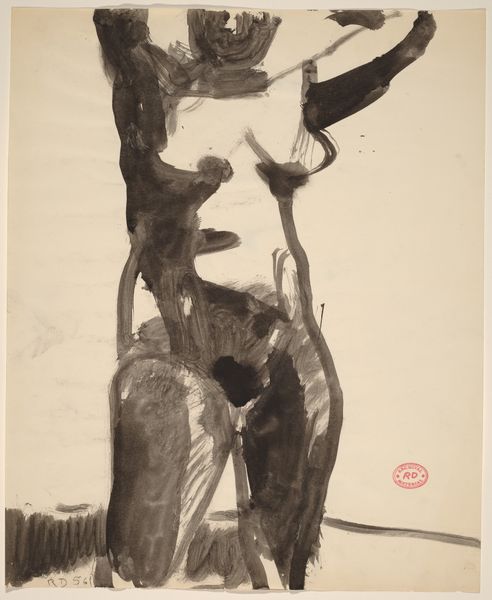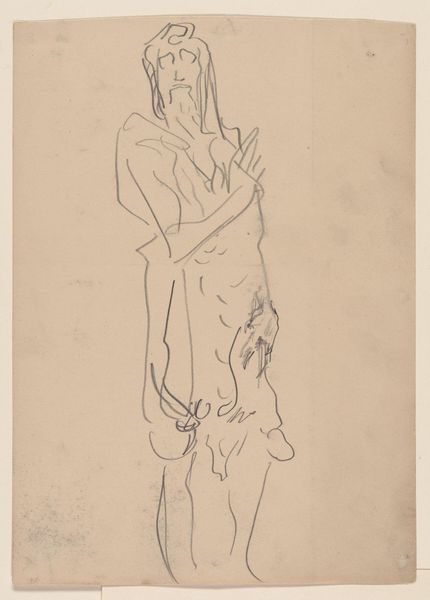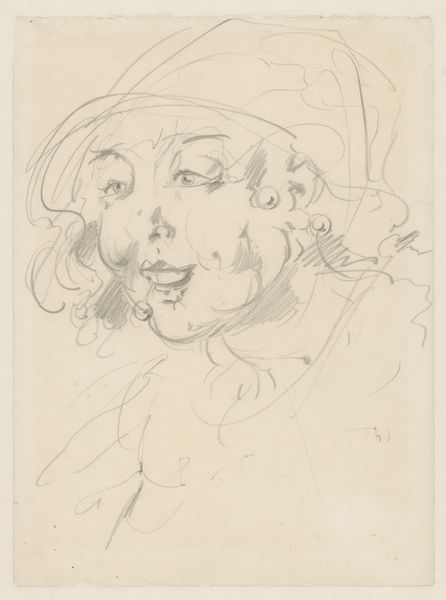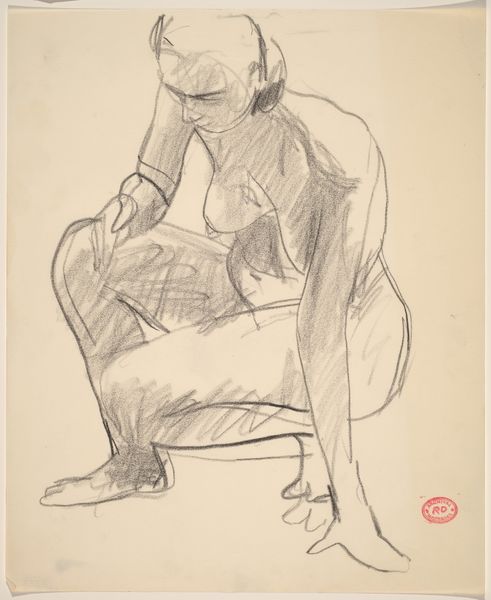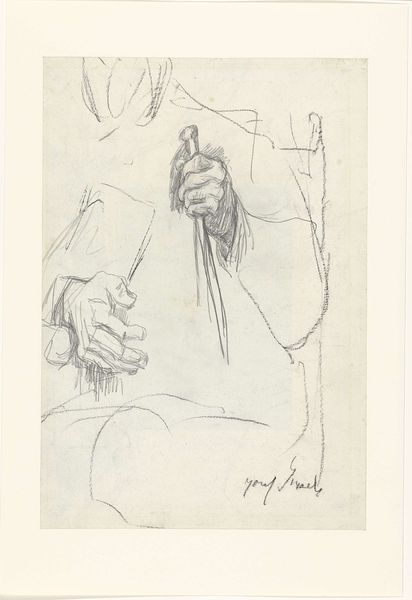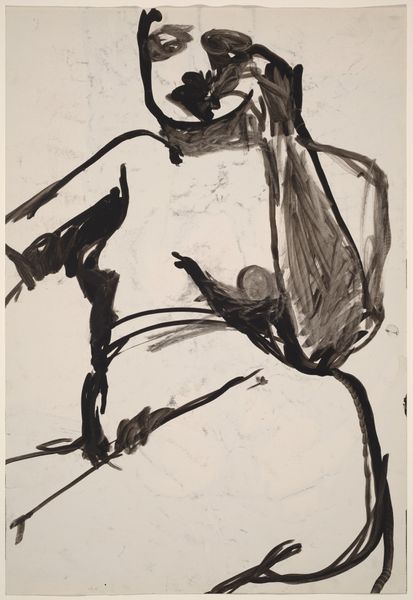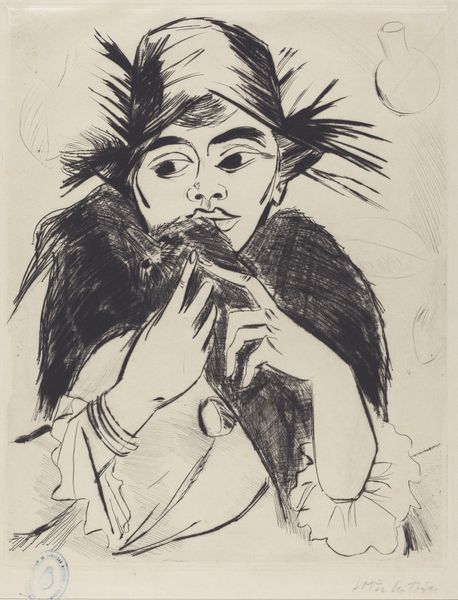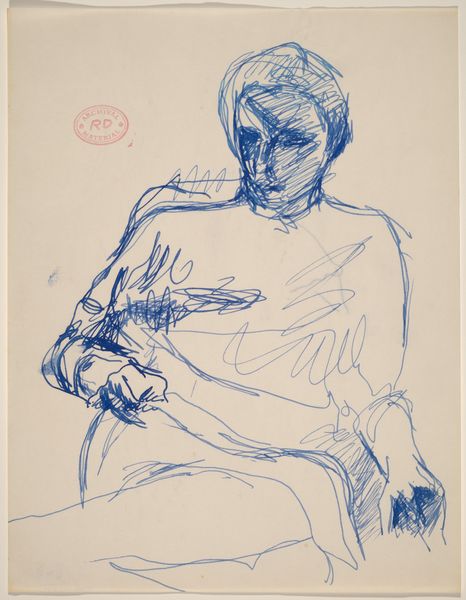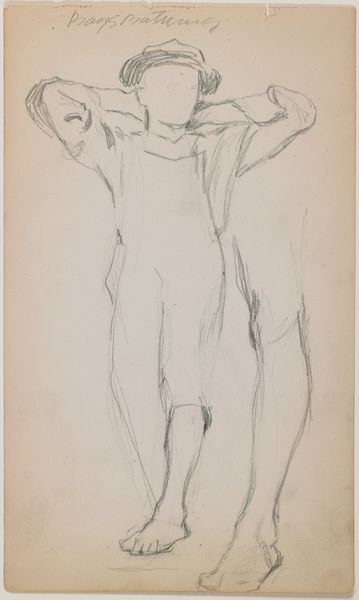
drawing, pencil
#
portrait
#
drawing
#
caricature
#
pencil sketch
#
caricature
#
figuration
#
pencil drawing
#
pencil
#
portrait drawing
#
realism
Dimensions: height 250 mm, width 159 mm
Copyright: Rijks Museum: Open Domain
Curator: Oh, this pencil drawing, titled "Magere puistige spreker," which translates to "Skinny pimply speaker," dates from the 1930s or 40s, and we're fortunate to have it here at the Rijksmuseum. What's your initial impression? Editor: It feels like a stage sketch, a raw energy, almost accusatory with that raised finger. The hasty lines vibrate with a kind of manic energy, a suppressed glee, you know? I wonder what inspired it, what that character embodies? Curator: It's fascinating to consider its creation in that interwar period, think about the sociopolitical context of the 30s and 40s. The readily available, relatively inexpensive materials such as paper and pencil point to its purpose perhaps as accessible caricature, not necessarily high art. The speed of production, the quick lines, suggest that too, a commentary dashed off rather than labored over. Editor: Yes, it does feel immediate, a thought barely contained. Those imperfections, those pimples… almost exaggerated. But the realism in the expression, the eyes seemingly bulging with opinion. Is it satire? Or perhaps, self-portrait? Sometimes our flaws give us power, give us a voice when no one expects. And this is powerful. Curator: The "speaker’s" costume certainly provides additional information. Note his flamboyant yet somewhat outdated attire and his gesturing hand. Could it suggest at critique towards performance culture? His gear resembles stage costume – therefore it certainly speaks of craft and artistry that are incorporated into spectacle and thus might provide accessibility. Editor: Hmmm, craftiness implied! He's definitely selling something, even if it’s just an idea. But beyond that initial reading, the sketch invites me to ponder the relationship between speaker and audience, you know? Between the flaws that we hide and those we amplify when we seek attention? The power that is drawn from these things. It asks us to confront this need of wanting to express, even under the pretenses. Curator: I agree that this is open to numerous interpretations, indeed. From the artist's hand to our own minds. Editor: Exactly, that's where the conversation gets really interesting. Thank you!
Comments
No comments
Be the first to comment and join the conversation on the ultimate creative platform.

